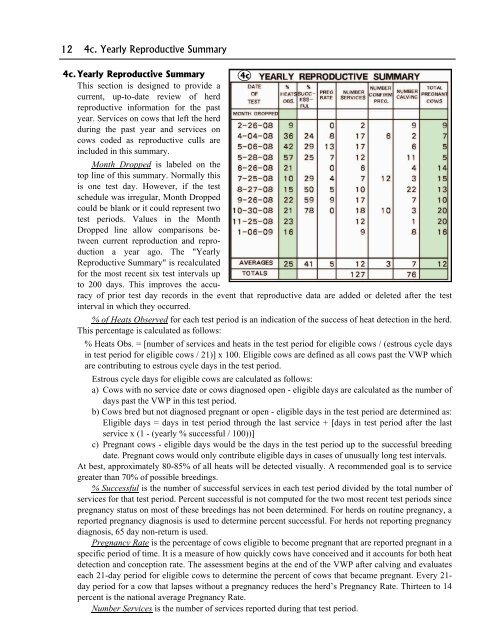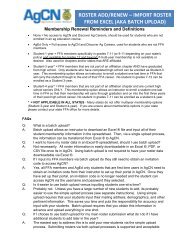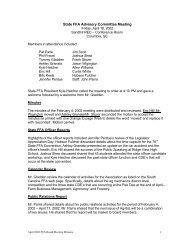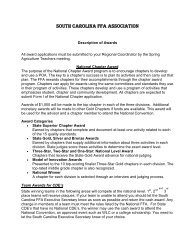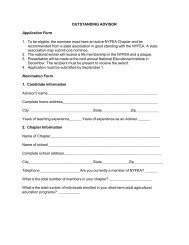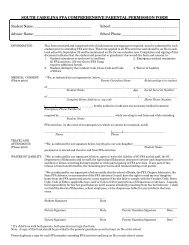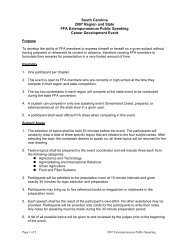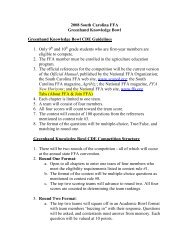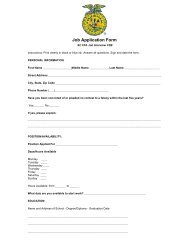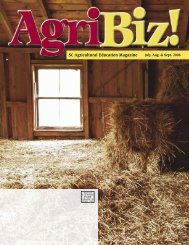DHI-202 Herd Summary
DHI-202 Herd Summary
DHI-202 Herd Summary
Create successful ePaper yourself
Turn your PDF publications into a flip-book with our unique Google optimized e-Paper software.
12<br />
4c. Yearly Reproductive <strong>Summary</strong><br />
4c. Yearly Reproductive <strong>Summary</strong><br />
This section is designed to provide a<br />
current, up-to-date review of herd<br />
reproductive information for the past<br />
year. Services on cows that left the herd<br />
during the past year and services on<br />
cows coded as reproductive culls are<br />
included in this summary.<br />
4c<br />
Month Dropped is labeled on the<br />
top line of this summary. Normally this<br />
is one test day. However, if the test<br />
schedule was irregular, Month Dropped<br />
could be blank or it could represent two<br />
test periods. Values in the Month<br />
Dropped line allow comparisons between<br />
current reproduction and reproduction<br />
a year ago. The "Yearly<br />
Reproductive <strong>Summary</strong>" is recalculated<br />
for the most recent six test intervals up<br />
to 200 days. This improves the accuracy<br />
of prior test day records in the event that reproductive data are added or deleted after the test<br />
interval in which they occurred.<br />
% of Heats Observed for each test period is an indication of the success of heat detection in the herd.<br />
This percentage is calculated as follows:<br />
% Heats Obs. = [number of services and heats in the test period for eligible cows / (estrous cycle days<br />
in test period for eligible cows / 21)] x 100. Eligible cows are defined as all cows past the VWP which<br />
are contributing to estrous cycle days in the test period.<br />
Estrous cycle days for eligible cows are calculated as follows:<br />
a) Cows with no service date or cows diagnosed open - eligible days are calculated as the number of<br />
days past the VWP in this test period.<br />
b) Cows bred but not diagnosed pregnant or open - eligible days in the test period are determined as:<br />
Eligible days = days in test period through the last service + [days in test period after the last<br />
service x (1 - (yearly % successful / 100))]<br />
c) Pregnant cows - eligible days would be the days in the test period up to the successful breeding<br />
date. Pregnant cows would only contribute eligible days in cases of unusually long test intervals.<br />
At best, approximately 80-85% of all heats will be detected visually. A recommended goal is to service<br />
greater than 70% of possible breedings.<br />
% Successful is the number of successful services in each test period divided by the total number of<br />
services for that test period. Percent successful is not computed for the two most recent test periods since<br />
pregnancy status on most of these breedings has not been determined. For herds on routine pregnancy, a<br />
reported pregnancy diagnosis is used to determine percent successful. For herds not reporting pregnancy<br />
diagnosis, 65 day non-return is used.<br />
Pregnancy Rate is the percentage of cows eligible to become pregnant that are reported pregnant in a<br />
specific period of time. It is a measure of how quickly cows have conceived and it accounts for both heat<br />
detection and conception rate. The assessment begins at the end of the VWP after calving and evaluates<br />
each 21-day period for eligible cows to determine the percent of cows that became pregnant. Every 21-<br />
day period for a cow that lapses without a pregnancy reduces the herd’s Pregnancy Rate. Thirteen to 14<br />
percent is the national average Pregnancy Rate.<br />
Number Services is the number of services reported during that test period.


